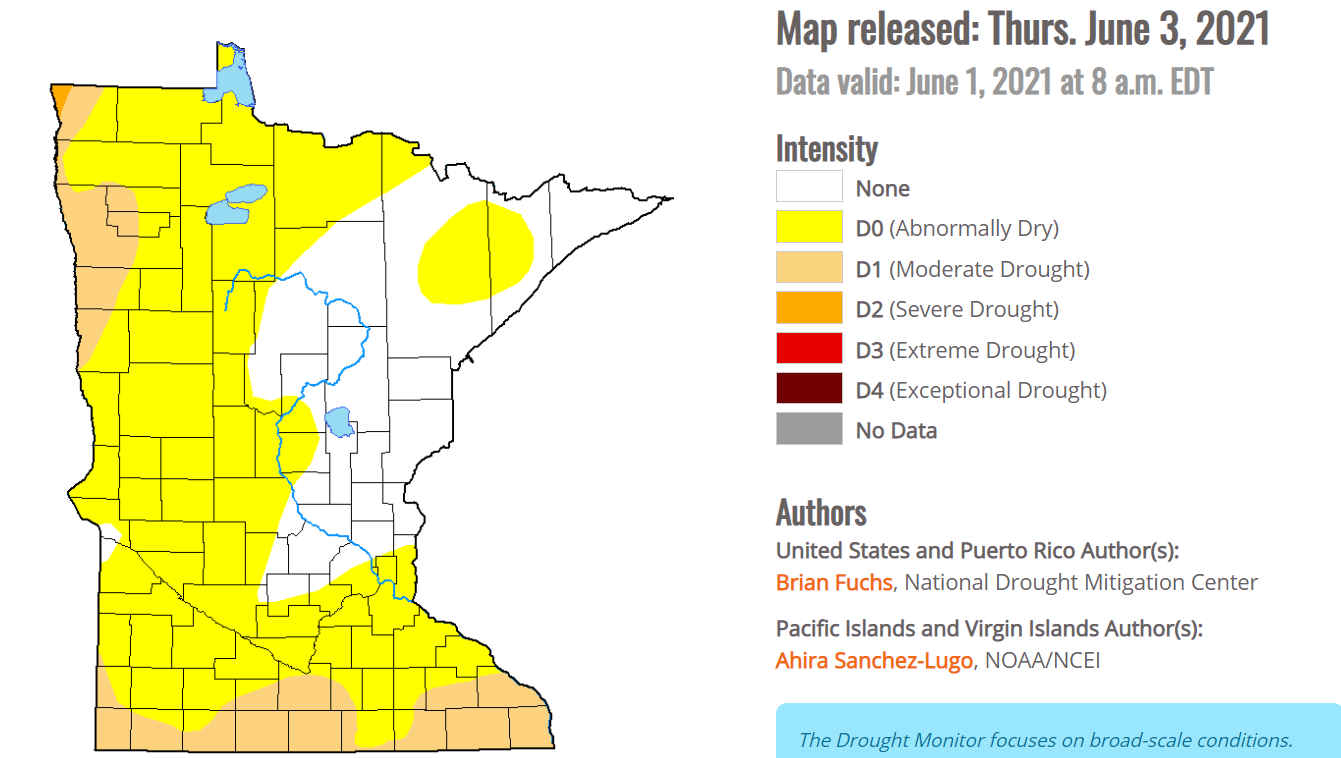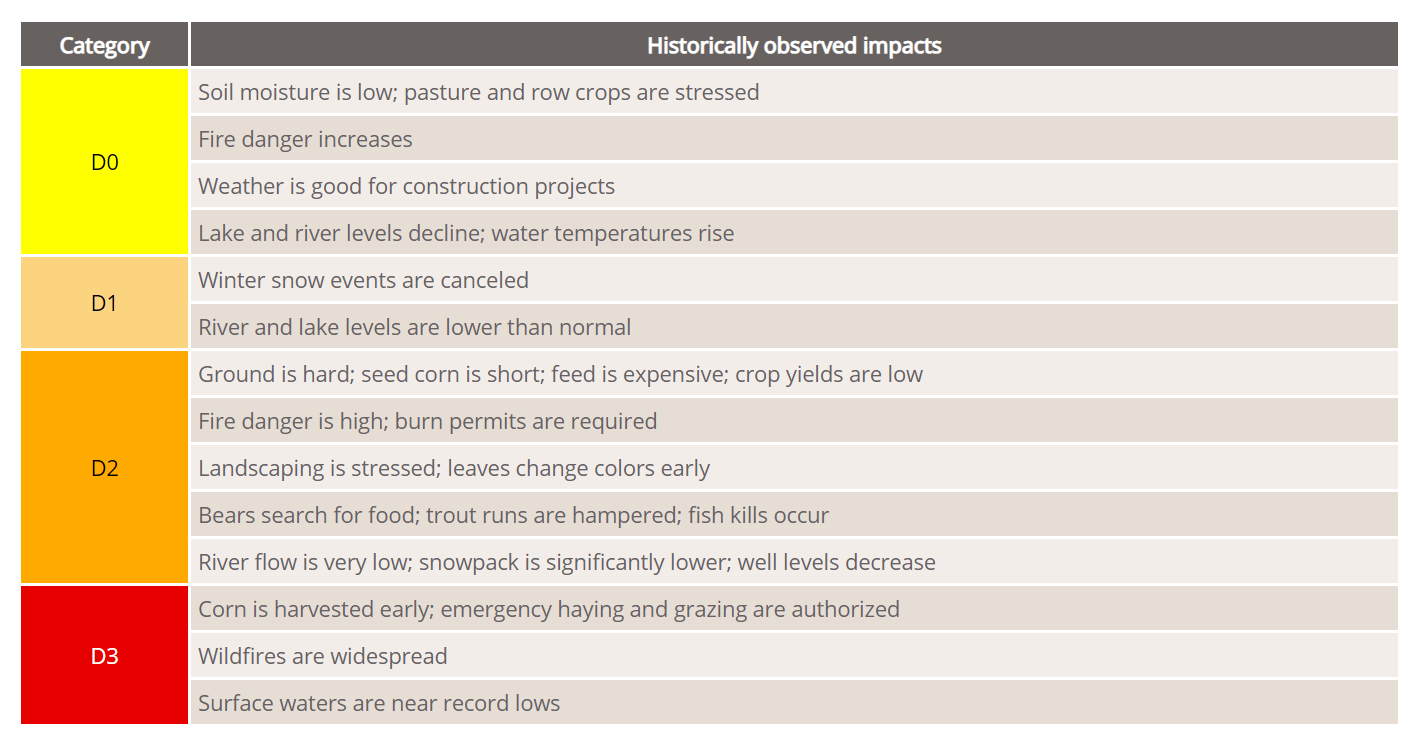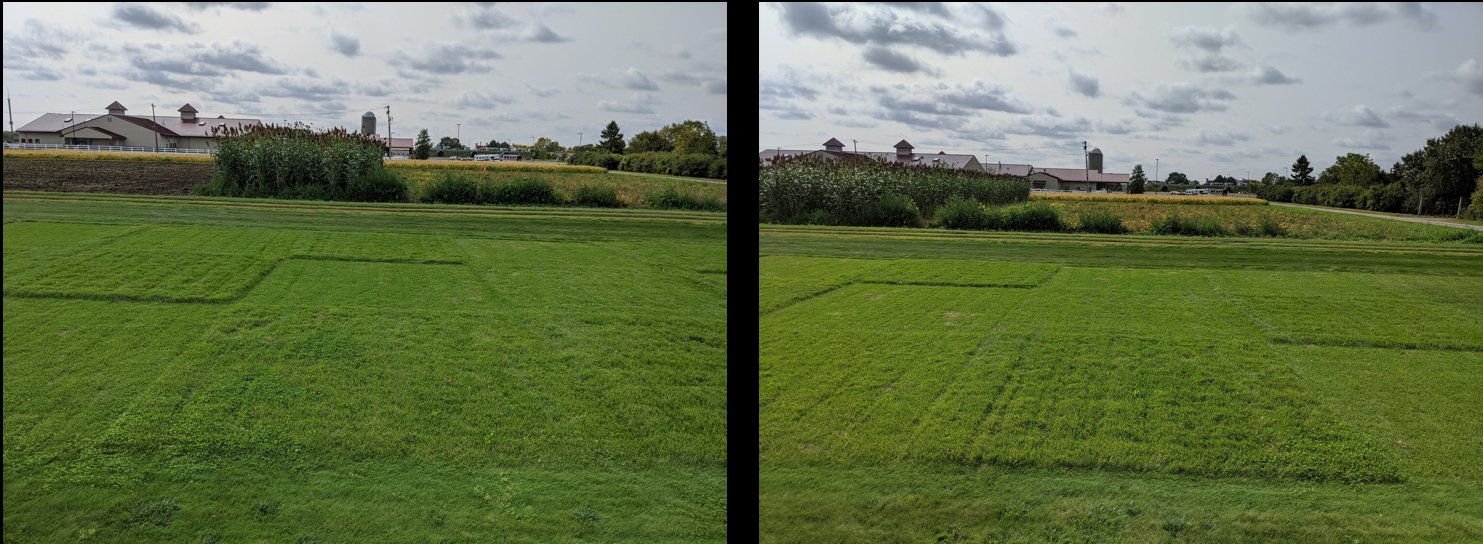By Shane Evans
Some people may think the title of this blogpost is an oxymoron. I am here to tell you in 2021 that is not the case. I have previously talked about water in the land of 10,000 lakes, but my focus was on where our water comes from and how it is used in the home. In this edition, I hope to address the fallacy of drought not being possible in the land of 10,000 lakes.
Though full of lakes and rivers, the great state of Minnesota is susceptible to drought. At the time of this writing, we may not be as susceptible as the western United States, but water scarcity is an issue for Minnesota. If you take a look at Figure 1, as of June 1st, roughly 75% of the state is experiencing some sort of drought. Though the Twin Cities Metro Area (TCMA) is not currently affected by drought, it is estimated that 750,000 Minnesotans are living in drought conditions.
Many of those 750,000 Minnesotans can be tied to the agricultural industry. Roughly 51% of Minnesota is considered agricultural land that provides over 400,000 jobs (Minnesota Board of Water and Soil Resources, 2019). These Minnesotans grow crops such as corn, soybeans, wheat, barley, peas and potatoes, making Minnesota the 4th highest ranking state for agricultural production. As such, if agricultural regions of the state experience long-term drought, many aspects of the Minnesota economy would be affected. Though very few areas of Minnesota are listed to be in a severe drought, even abnormally dry conditions can cause problems for members of the agricultural community (see Figure 2).
Drought not only affects the agricultural industry, but it can also impact the water supply of urban and suburban communities. In 2013, White Bear Lake experienced its lowest water level in recorded history. In case you were wondering, 2013 was also the worst drought Minnesota has experienced in recent memory (National Integrated Drought Information System, 2021). The impacts of these “drought years” are felt by many, but they can be compounded when coupled with overwatering by communities and homeowners. During summer months, TCMA homeowners use three times more water than they do in winter months (Metropolitan Council, 2014). As you may guess, this increase can be primarily attributed to outdoor irrigation.
Fortunately, here at the University of Minnesota we are doing research to help solve this problem. To highlight one example, the pictures below (Figure 3) show one of our research experiments. One photo represents nine plots which were irrigated by a traditional irrigation controller while the other photo represents nine plots that were irrigated by a smart irrigation controller. The smart irrigation controller was connected to the internet and made adjustments to the irrigation schedule based on local weather data. Can you tell which photo belongs to the traditional irrigation controller and which belongs to the smart irrigation controller?
If you look very closely, you may be able to notice a slight difference, but what you may not know is approximately 2,000 less gallons of water were applied to the nine plots in the image on the right throughout 2020. As of this writing, 2021 is predicted to be drier than previous years in Minnesota; however, it can be hard to predict drought and exactly how much our water supply will be affected. What we can control is how much water we apply to our lawns and landscapes this year. Research shows a green lawn can be maintained with much less water than a typical TCMA resident with an irrigation system applies to their lawn (see Figure 3). I hope this year we can all do a little better and use a little less water.
In addition to the project described above, our research group at the University studies many more aspects of turfgrass management. To learn more, please read our other blog posts and check out our University Extension webpage.
For updates on drought conditions in Minnesota, visit the U.S. Drought Monitor website. The drought map is updated every two weeks. The most recent data is from June 1st (see Figure 1). Other sites with drought information include Minnesota Statewide Drought Plan webpage and the Minnesota Department of Natural Resources Water Conservation webpage.


